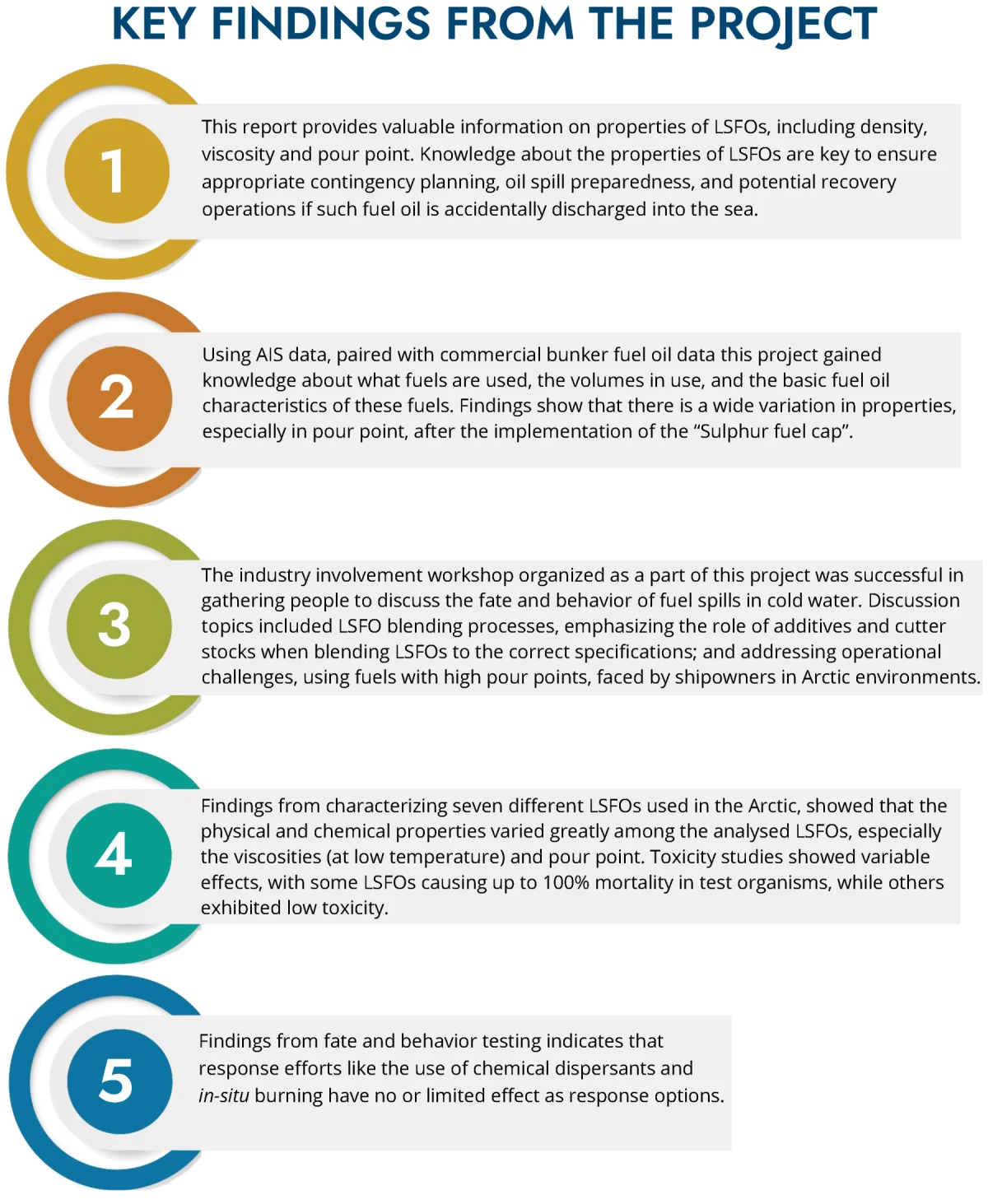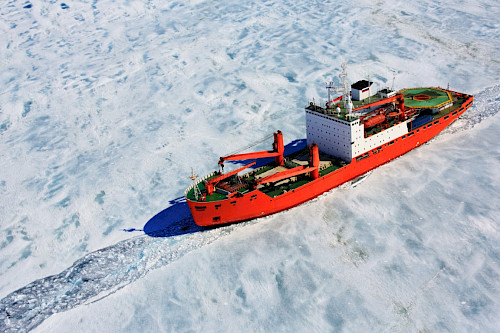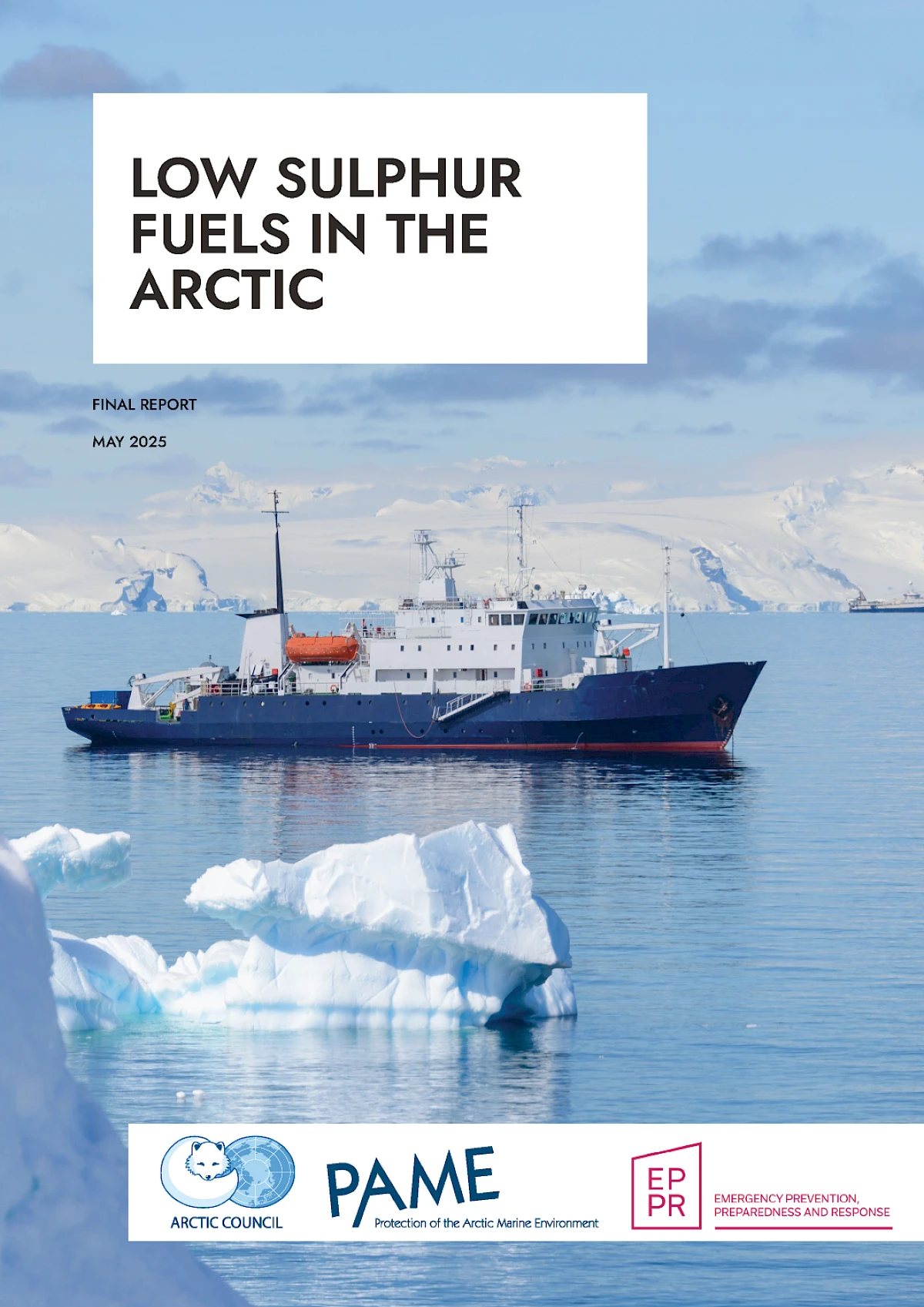
New Low Sulphur Fuels in the Arctic
The IMO regulation for a 0.50% global sulphur cap for marine fuels entered into force 1. January 2020. The new Sulphur cap has completely changed the fuel market for ships. As a result, the fuel mixture on all ships sailing in the Arctic is largely a knowledge gap. The main objective of this project was to bridge this gap, and to study the toxicity and fate and behavior of new fuel oils in cold water conditions.
The final report summarizes the key findings from five work packages. The different reports and memos from these work packages are attached to this summary report.
The project had a goal to identify the most frequently used low Sulphur bunker fuels used by ships operating in the Arctic Sea areas, and the basic fuel oil properties of these fuels. This knowledge is important for contingency planning, oil spill preparedness, and potential recovery operations. In addition, the project analyzed the properties of several selected fuels sourced from fuel oil providers supplying fuel for ships sailing in the Arctic in greater detail. The goal of the project has been successfully achieved, and the key findings are provided in this report.
Findings identify changes in types of fuels or fuel specifications that could reduce the environmental risk in the Arctic. Important follow-up projects to fill new knowledge gaps uncovered during the project implementation are also recommended. Identifying these knowledge gaps is an important finding from the project in its own right and could be crucial for understanding LSFO and the reasons for their variation in behavior when spilled on a cold sea surface.
In 2019 the fate and behaviour of low sulphur fuel oils (LSFOs) spilled at sea was largely unknown, because this type of oil was a relatively new product, introduced to replace fuel oils banned under global sulphur fuel cap, which was implemented January 1, 2020 by the IMO. As a result of the regulatory developments, an increasing number of “new generation” LSFOs are currently being marketed for replacement of the conventional fuel types, such as heavy fuel oil (HFO) with a high content of sulphur (0.5–3.5%S).
Early analyses of the new generation LSFOs indicated that this oil type had properties that would be extremely challenging to respond to if spilled, especially if spilled into the cold Arctic environment. Therefore, this project aimed at investigating use of LSFOs in the Arctic and what properties these oils have (WP1), by using AIS data combined with bunker fuel oil data from the commercial laboratory Veritas Petroleum Services (VPS). Based on findings from these data, representative LSFOs oils used by ships sailing in the Arctic, was characterised in the laboratory (WP3/4). This work was done to get an in depth understanding about the observed variation in the physical and chemical properties, as well as getting a better understanding of fate and behaviour of LSFO spills in a cold environment, by studying toxicity, potential for natural attenuation and the effectiveness for mitigation using dispersants and in-situ burning (WP3/WP4 /WP5).

SUPPORTING DOCUMENTS
Furthermore, see the five supporting documents:
-
 Annex I: Summary of the project report: Low Sulphur Fuel Oils – identification of key environmental impacts in a cold marine environment
Annex I: Summary of the project report: Low Sulphur Fuel Oils – identification of key environmental impacts in a cold marine environment- Annex II: Interlaboratory comparison of three low-sulfur marine fuel oils between laboratories in Canada, China, Sweden, USA, and Norway
- Annex III: Methodology for screening properties of New Low Sulphur Marine Fuel - Version 1 (2021)
- Annex IV: Methodology for screening properties of New Low Sulphur Marine Fuel - Version 1.1 (2024)
- Annex V: Characterization of four new low sulphur marine fuel oils
Report from Work Package 1
The project has identified the Low Sulphur Fuels and Ultra Low Sulphur Fuels most frequently used by ships operating in Arctic waters, the fuel oil transport volumes (in ton nautical miles), and basic fuel oil characteristics of such fuel oil. The project has in other words filled a knowledge gap related to fuel oil use, in relation to quantities and qualities in Arctic waters.
The report from Work Package 1 of the project details this information.
The report provides information on properties of LSFOs, including density, viscosity and pourpoint to ensure appropriate contingency planning, oil spill preparedness, and potential recovery operations if such fuel oil is accidentally discharged to sea. The identified LSFOs and ULSFOs show a wide variability with respect of viscosity, density and pour point. The majority of the residual fuels that fall in the VLSFO and ULSFO category used in Arctic waters today fall under the definition of heavy fuel oil as set out in regulation 43.1.2 of MARPOL Annex I and will be prohibited to use and carry for use once the new regulation 43A enters into force, mainly because the density of the fuel oils exceeds 900 kg/m3.
The pour point is with some exceptions high for the used LSFOs and ULSFOs which means that the majority of such fuels will solidify, or to different degrees become sticky and stiff, if accidently discharged to a cold sea surface. Solidified, sticky and stiff fuel oil will negatively impact the effectiveness of oil spill response equipment from reduced effectiveness to not functioning at all.
In work packages 4 and 5 of this project 10 to 12 representative LSFO’s never analysed before have been selected for being collected and analysed. These fuel oils will be analysed in kind by laboratories in Arctic Council Member States and observer states. By analysing several representative low-sulphur fuel oils in the market, one will learn more about the properties and variability of these new fuel oils. More facts and knowledge is needed to improve and adapt oil spill response equipment and techniques to the LSFOs and ULSFOs. Possibly the chemistry of low sulphur fuel oils themselves can be altered, so that the most problematic properties of future fuel oil blends used in Arctic waters are avoided.
Click here to read the report.
Lead Working Groups
EPPRPAME
Lead Arctic States & Permanent Participants
NorwayEngaged observers
GermanyPeople's Republic of China
Republic of Korea
 Arctic Council Working Group
Arctic Council Working Group 
